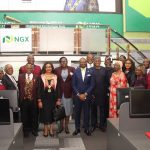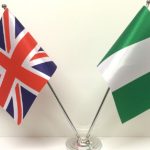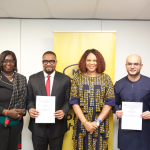World
Russia’s Promise of Building Nuclear Plants in Africa
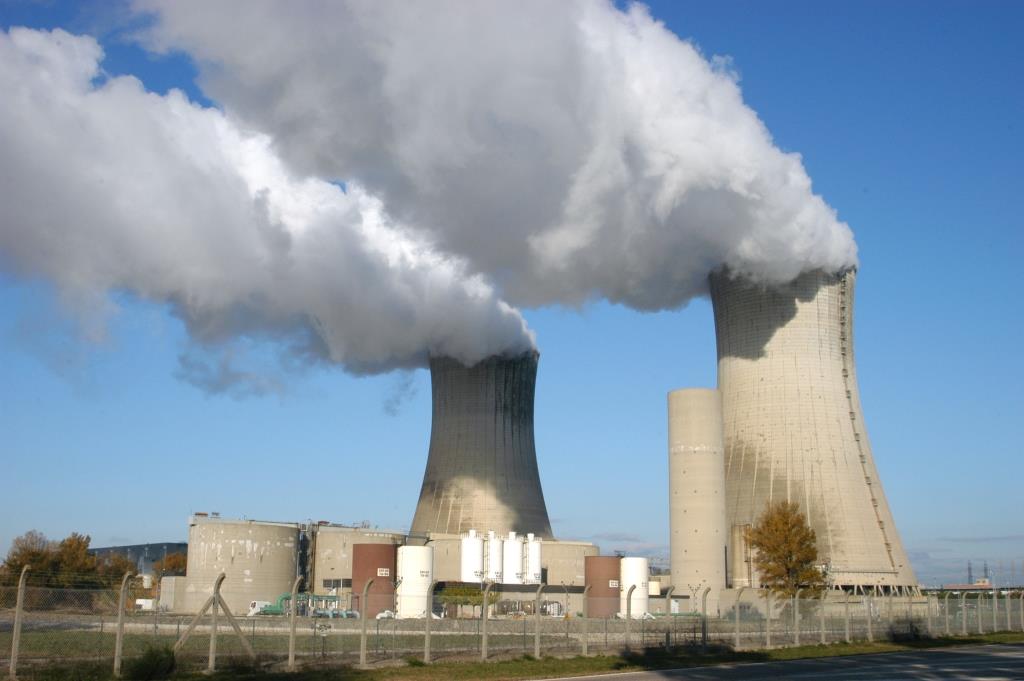
By Kester Kenn Klomegah
For more than two decades, Russia has been struggling to help Africa overcome its energy deficit, with little success.
But now, with financial support from the European Union (EU), two international organizations have been chosen as modelling partners for the development of the African Continental Power Systems Master Plan (CMP).
The two organizations will lead the development of an electricity master plan that promotes access to affordable, reliable and sustainable electricity supplies across the continent.
As expected, African stakeholders will play roles in identifying surplus and deficit regions/countries, in terms of electricity generation and demand, as well as the most cost-effective ways of expanding clean electricity generation and transmission infrastructure across Africa.
African energy ministers tasked the African Union Development Agency (AUDA-NEPAD) to lead the development of the master plan. Following a two-year consultation process coordinated by the EU Technical Assistance Facility (TAF) for Sustainable Energy.
Eastern and Southern Africa are vast, geographically diverse regions with rapidly growing populations and rising demands for energy, according to the master plan, there are two regional power pools.
A new study entitled Planning and Prospects for Renewable Power: Eastern and Southern Africa assesses the long-term energy plans for the two regional power pools (known as the Eastern and Southern African Power Pools), and finds the region well-endowed with high quality, cost-effective, but under-utilized wind and solar resources.
In practical terms, Africans are looking for energy alternatives to embark on the next round of industrialization. Russia’s nuclear energy diplomacy in Africa has been at the crossroad over the past two decades since the collapse of Soviet-era.
In order to find long-shelf solutions to chronic power shortages, African leaders and Governments, that have shown interest in adopting Russian nuclear energy, signed necessary legal documents but lacked the needed funds for prompt implementation and final realization.
Russia and Africa’s aspirations in this sphere of nuclear cooperation come with many challenges. In Rwanda and many other African countries, the first question is finance. “Rwanda’s annual budget stands at US$3 billion while the construction of the nuclear power plant would cost not less than US$9 billion which is equivalent to Rwanda’s entire gross domestic product,” David Himbara, Rwandan-Canadian Professor of International Development at Canada’s Centennial College, wrote in an emailed interview.
He said that Rwandan President Paul Kagame always believed that he must validate his supposedly visionary and innovative leadership by pronouncing grand projects that rarely materialized.
Currently, all African countries have a serious energy crisis. Over 620 million in Sub-Saharan Africa out of 1.3 billion people do not have electricity. It is in this context that several African countries are exploring nuclear energy as part of the solution.
There is only one nuclear power plant on the entire African continent, namely, Koeberg nuclear power station in South Africa. Commissioned in 1984, Koeberg provides nearly 2,000 megawatts, which is about 5% of installed electricity generation in South Africa.
According to Himbara, “Of all African countries that have shown interest in nuclear energy, none have so far gone beyond the stage of conducting a preliminary feasibility study, project costing and financing models, except South Africa.”
But, the South Africa US$76 billion deal with the Russians to build a nuclear power plant collapsed along with the Government of Jacob Zuma that negotiated the deal in secrecy, in fact when such corporate projects have to be discussed and approved by the parliament and necessarily have to pass through an international tendering process.
Russia and South Africa concluded an intergovernmental agreement on strategic partnership in the nuclear sphere in 2014. The agreement provided, in particular, for the construction of up to eight NPP power units.
“Nuclear waste will pile up, and where are they going to put it? The Sahara? The US is always trying to force nuclear waste repository on some poor or indigenous community and when that fails, the waste keeps piling up at the reactor sites, creating greater and greater environmental risks,” according to Himbara.
He underscored the fact that “managing nuclear waste and its safety is universally complex and dangerous. The Chernobyl disaster in Ukraine and Fukushima in Japan, remind the world of the human and environmental costs of nuclear power accidents. Millions of people are still suffering from radiation and radiation-related diseases till today.”
Foreign Minister Sergey Lavrov, in an interview with the Hommes d’Afrique magazine in March 2018, described Africa as rich in raw material resources, including those that are required for high technology and for moving to a new technological pattern. Apart from mining, Russia and African countries are cooperating on high technology.
What was more important for Africa’s energy sector when he informed that Rosatom has been considering a number of projects that are of interest to Africans, for instance, the creation of a nuclear research and technology centre in Zambia. Nigeria has a similar project. There are good prospects for cooperation with Ghana, Tanzania and Ethiopia. Talks are still continuing on the construction of nuclear power plants in South Africa.
Shadreck Luwita, Zambian Ambassador to the Russian Federation, informed that the processes of design, feasibility study and approvals regarding the project have been concluded, in the case of Zambia. The site of the project designated and it is envisaged that construction should commence, in earnest, not later than the second half of 2018. That construction remains a monumental dream, though.
In addition, he affirmed that the Russians envisaged technology transfer in the development of this massive project by way of manpower development capacity. For now, there are a few Zambian nationals, who are studying nuclear science in Russia.
The Zambian Government ultimately profitable hopes are that upon commissioning of this project, excess power generated from this plant could be made available for export to neighbouring countries under the Southern African Development Community Power Pool framework arrangement.
Zambians are still worried about Russia’s promise of nuclear plants estimated at US$10 billion. In February 2020, Chairperson of the Federation Council (the Upper House or the Senate), Valentina Matviyenko, headed a Russian delegation on a three-day reciprocal visit aimed at strengthening parliamentary diplomacy with Namibia and Zambia.
While in Zambia meeting with the president and other high-ranking legislators, she expressed regret at the suspension of the construction of a centre for nuclear science and technology due to financial issues. The request submitted to the Russian president needed careful consideration by the relevant ministries and departments. She hoped Russia and Zambia would jointly find options to promote funding to roll out the construction of a centre for nuclear science and technology.
This is not an isolated case. From all indications, Russia wants to turn nuclear energy into a major export industry. It has signed agreements with African countries, many with no nuclear tradition, including Rwanda and Zambia. In addition, Russia is set to build large nuclear plants in Egypt that could serve the Maghreb region.
Interestingly, Egypt’s dreams of building nuclear plants have spanned with the agreement that was signed (as far back in March 2008) during an official visit to the Kremlin by the ousted President Hosni Mubarak, and then again with former Egyptian leader Mohammed Morsi who discussed the same nuclear project with Vladimir Putin in April 2013 in Sochi, southern Russia.
During the dawn of a new era at the Sochi summit, Vladimir Putin and Abdel Fattah Al Sisi signed an agreement to set up four nuclear plants in El Dabaa, on the Mediterranean coast west of the port city of Alexandria, where a research reactor has stood for years.
The deal was signed on the heels of talks held between Putin and Al Sisi, where both expressed high hopes that Russia would help construct the country’s first nuclear facility. Egypt began its nuclear program in 1954 and in 1961, acquired a 2-megawatt research reactor, built by the Soviet Union.
However, plans to expand the site have been decades in the making that Rosatom will provide its fuel, personnel training, and build the necessary infrastructure. The four blocks of the nuclear power plant will cost about US$20 billion. Director Anton Khlopkov and Research Associate Dmitry Konukhov at the Center for Energy and Security Studies, co-authored a report to Valdai Discussion Club, that the success of Egypt’s nuclear project depends on three key factors.
These are the political stability and security situation in Egypt, a viable financing mechanism that reflects the country’s economic situation, and the government’s ability to secure support for the project among the local residents of El Dabaa, the site chosen for Egypt’s first nuclear plant back in the 1980s.
In reality, Ghana has similar never-ending dreams and fairy tales of owning nuclear plants. The agreement was re-signed on June 2, 2015. The Russian reactor, a 1000 MW plant, will cost a minimum of $4.2 billion. The financing scheme has not been finalized by the parliament. And it will take about eight to ten years from site feasibility studies to commissioning of the first unit, according to the Ghana Atomic Energy Commission.
As local media reported, Ghana’s quest to industrialize for economic growth and development has fast-tracked plans to establish nuclear power in the country within the next decade, which means by 2029 and export excess power to other countries in the West African sub-region.
With “One District, One Factory” – Ghana’s industrialization agenda might not be realized under Nana Addo Dankwa Akufo-Addo’s administration based on the roadmap of the nuclear power programme to commence construction by 2023 and inject nuclear energy into the grip by 2030.
The African countries’ MoUs and Agreements with Rosatom including South Africa, Nigeria, Ghana, Kenya, Rwanda, Tanzania, Zambia and the rest are, most probably, stacked. Nearly three decades after the Soviet collapse, not a single plant has been completed in Africa.
Some still advocate for alternative energy supply. Gabby Asare Otchere-Darko, Founder and Executive Director of Danquah Institute, a non-profit organization that promotes policy initiatives and advocates for Africa’s development, wrote in an email that “Africa needs expertise, knowledge transfer and the kind of capital imports that can assist Africa to develop its physical infrastructure, add value to two of its key resources: natural resources and human capital.”
Russia has respectable expertise in one key area for Africa: energy development. “But, has Russia the courage, for instance, to take on the stalled $8-$10 billion Inga 3 hydropower project on the Congo river? This is the kind of development project that can vividly send out a clear signal to African leaders and governments that Russia is, indeed, ready for business,” he said.
The renewable energy potential is enormous in Africa, citing the Grand Inga Dam in the Democratic Republic of Congo. Grand Inga is the world’s largest proposed hydropower scheme. It is a grand vision to develop a continent-wide power system. Grand Inga 3, expected to have an electricity-generating capacity of about 40,000 megawatts – which is nearly twice as much as the 20 largest nuclear power stations.
Ryan Collyer, the Regional Representative of Rosatom for Sub-Saharan Africa, told me in an interview in April 2021, that apart from energy poverty, nuclear can solve other continent problems, from low industrialization to advances in science, healthcare, and agriculture, thus propelling the continent towards the master plan of African Union’s Agenda 2063.
“It envisions Africa’s transformation into the global powerhouse of the future, so we are advocating a diverse energy mix that utilizes all available resources, including renewables and nuclear, to ensure climate resilience and environmental safety, social equity, and supply security,” Collyer said.
Some researchers and experts strongly believe and further estimate that the cost of building nuclear power, especially its associated high risks, does not make any sense when compared to the cost of building renewables or other sources of energy to solve energy shortages in Africa.
According to the company profile, Rosatom offers a complete range of nuclear power products and services from nuclear fuel supply, technical services and modernization to personnel training and establishing nuclear infrastructure. With 70 years of experience, the company is the world leader in high-performance solutions for all kinds of nuclear power plants. Rosatom has built more than 120 research reactors in Russia and abroad.
World
Russian-Nigerian Economic Diplomacy: Ajeokuta Symbolises Russia’s Remarkable Achievement in Nigeria
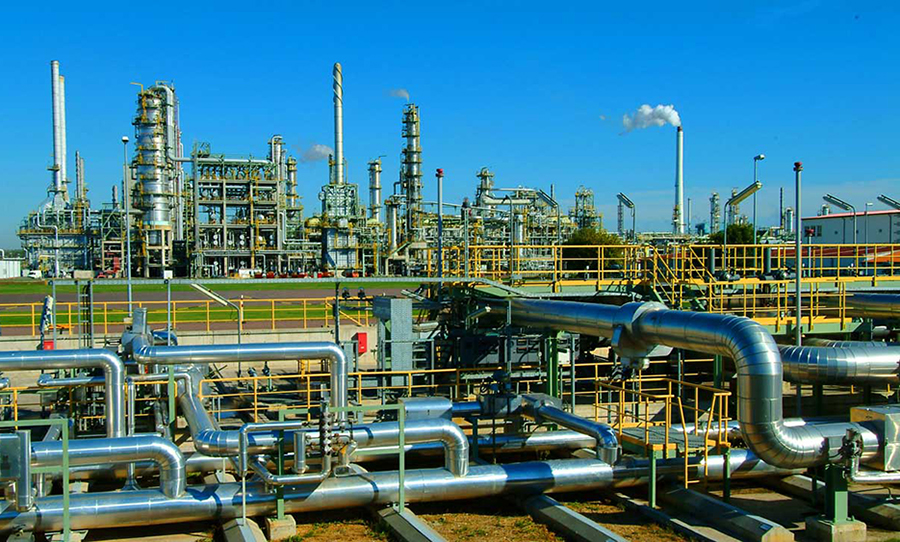
By Kestér Kenn Klomegâh
Over the past two decades, Russia’s economic influence in Africa—and specifically in Nigeria—has been limited, largely due to a lack of structured financial support from Russian policy banks and state-backed investment mechanisms. While Russian companies have demonstrated readiness to invest and compete with global players, they consistently cite insufficient government financial guarantees as a key constraint.
Unlike China, India, Japan, and the United States—which have provided billions in concessionary loans and credit lines to support African infrastructure, agriculture, manufacturing, and SMEs—Russia has struggled to translate diplomatic goodwill into substantial economic projects. For example, Nigeria’s trade with Russia accounts for barely 1% of total trade volume, while China and the U.S. dominate at over 15% and 10% respectively in the last decade. This disparity highlights the challenges Russia faces in converting agreements into actionable investment.
Lessons from Nigeria’s Past
The limited impact of Russian economic diplomacy echoes Nigeria’s own history of unfulfilled agreements during former President Olusegun Obasanjo’s administration. Over the past 20 years, ambitious energy, transport, and industrial initiatives signed with foreign partners—including Russia—often stalled or produced minimal results. In many cases, projects were approved in principle, but funding shortfalls, bureaucratic hurdles, and weak follow-through left them unimplemented. Nothing monumental emerged from these agreements, underscoring the importance of financial backing and sustained commitment.
China as a Model
Policy experts point to China’s systematic approach to African investments as a blueprint for Russia. Chinese state policy banks underwrite projects, de-risk investments, and provide finance often secured by African sovereign guarantees. This approach has enabled Chinese companies to execute large-scale infrastructure efficiently, expanding their presence across sectors while simultaneously investing in human capital.
Egyptian Professor Mohamed Chtatou at the International University of Rabat and Mohammed V University in Rabat, Morocco, argues: “Russia could replicate such mechanisms to ensure companies operate with financial backing and risk mitigation, rather than relying solely on bilateral agreements or political connections.”
Russia’s Current Footprint in Africa
Russia’s economic engagement in Africa is heavily tied to natural resources and military equipment. In Zimbabwe, platinum rights and diamond projects were exchanged for fuel or fighter jets. Nearly half of Russian arms exports to Africa are concentrated in countries like Nigeria, Zimbabwe, and Mozambique. Large-scale initiatives, such as the planned $10 billion nuclear plant in Zambia, have stalled due to a lack of Russian financial commitment, despite completed feasibility studies. Similar delays have affected nuclear projects in South Africa, Rwanda, and Egypt.
Federation Council Chairperson Valentina Matviyenko and Senator Igor Morozov have emphasized parliamentary diplomacy and the creation of new financial instruments, such as investment funds under the Russian Export Center, to provide structured support for businesses and enhance trade cooperation. These measures are designed to address historical gaps in financing and ensure that agreements lead to tangible outcomes.
Opportunities and Challenges
Analysts highlight a fundamental challenge: Russia’s limited incentives in Africa. While China invests to secure resources and export markets, Russia lacks comparable commercial drivers. Russian companies possess technological and industrial capabilities, but without sufficient financial support, large-scale projects remain aspirational rather than executable.
The historic Russia-Africa Summits in Sochi and in St. Petersburg explicitly indicate a renewed push to deepen engagement, particularly in the economic sectors. President Vladimir Putin has set a goal to raise Russia-Africa trade from $20 billion to $40 billion over the next few years. However, compared to Asian, European, and American investors, Russia still lags significantly. UNCTAD data shows that the top investors in Africa are the Netherlands, France, the UK, the United States, and China—countries that combine capital support with strategic deployment.
In Nigeria, agreements with Russian firms over energy and industrial projects have yielded little measurable progress. Over 20 years, major deals signed during Obasanjo’s administration and renewed under subsequent governments often stalled at the financing stage. The lesson is clear: political agreements alone are insufficient without structured investment and follow-through.
Strategic Recommendations
For Russia to expand its economic influence in Africa, analysts recommend:
- Structured financial support: Establishing state-backed credit lines, policy bank guarantees, and investment funds to reduce project risks.
- Incentive realignment: Identifying sectors where Russian expertise aligns with African needs, including energy, industrial technology, and infrastructure.
- Sustained implementation: Turning signed agreements into tangible projects with clear timelines and milestones, avoiding the pitfalls of unfulfilled past agreements.
With proper financial backing, Russia can leverage its technological capabilities to diversify beyond arms sales and resource-linked deals, enhancing trade, industrial, and technological cooperation across Africa.
Conclusion
Russia’s Africa strategy remains a work in progress. Nigeria’s experience with decades of agreements that failed to materialize underscores the importance of structured financial commitments and persistent follow-through. Without these, Russia risks remaining a peripheral player (virtual investor) while Arab States such as UAE, China, the United States, and other global powers consolidate their presence.
The potential is evident: Africa is a fast-growing market with vast natural resources, infrastructure needs, and a young, ambitious population. Russia’s challenge—and opportunity—is to match diplomatic efforts with financial strategy, turning political ties into lasting economic influence.
World
Afreximbank Warns African Governments On Deep Split in Global Commodities

By Adedapo Adesanya
Africa Export-Import Bank (Afreximbank) has urged African governments to lean into structural tailwinds, warning that the global commodity landscape has entered a new phase of deepening split.
In its November 2025 commodity bulletin, the bank noted that markets are no longer moving in unison; instead, some are powered by structural demand while others are weakening under oversupply, shifting consumption patterns and weather-related dynamics.
As a result of this bifurcation, the Cairo-based lender tasked policymakers on the continent to manage supply-chain vulnerabilities and diversify beyond the commodity-export model.
The report highlights that commodities linked to energy transition, infrastructure development and geopolitical realignments are gaining momentum.
For instance, natural gas has risen sharply from 2024 levels, supported by colder-season heating needs, export disruptions around the Red Sea and tightening global supply. Lithium continues to surge on strong demand from electric-vehicle and battery-storage sectors, with growth projections of up to 45 per cent in 2026. Aluminium is approaching multi-year highs amid strong construction and automotive activity and smelter-level power constraints, while soybeans are benefiting from sustained Chinese purchases and adverse weather concerns in South America.
Even crude oil, which accounts for Nigeria’s highest foreign exchange earnings, though still lower year-on-year, is stabilising around $60 per barrel as geopolitical supply risks, including drone attacks on Russian facilities, offset muted global demand.
In contrast, several commodities that recently experienced strong rallies are now softening.
The bank noted that cocoa prices are retreating from record highs as West African crop prospects improve and inventories recover. Palm oil markets face oversupply in Southeast Asia and subdued demand from India and China, pushing stocks to multi-year highs. Sugar is weakening under expectations of a nearly two-million-tonne global surplus for the 2025/26 season, while platinum and silver are seeing headwinds from weaker industrial demand, investor profit-taking and hawkish monetary signals.
For Africa, the bank stresses that the implications are clear. Countries aligned with energy-transition metals and infrastructure-linked commodities stand to benefit from more resilient long-term demand.
It urged those heavily exposed to softening agricultural markets to accelerate a shift into processing, value addition and product diversification.
The bulletin also called for stronger market-intelligence systems, improved intra-African trade connectivity, and investment in logistics and regulatory capacity, noting that Africa’s competitiveness will depend on how quickly governments adapt to the new two-speed global environment.
World
Aduna, Comviva to Accelerate Network APIs Monetization

By Modupe Gbadeyanka
A strategic partnership designed to accelerate worldwide enterprise adoption and monetisation of Network APIs has been entered into between Comviva and the global aggregator of standardised network APIs, Aduna.
The adoption would be done through Comviva’s flagship SaaS-based platform for programmable communications and network intelligence, NGAGE.ai.
The partnership combines Comviva’s NGAGE.ai platform and enterprise onboarding expertise with Aduna’s global operator consortium.
This unified approach provides enterprises with secure, scalable access to network intelligence while enabling telcos to monetise network capabilities efficiently.
The collaboration is further strengthened by Comviva’s proven leadership in the global digital payments and digital lending ecosystem— sectors that will be among the biggest adopters of Network APIs.
The NGAGE.ai platform is already active across 40+ countries, integrated with 100+ operators, and processing over 250 billion transactions annually for more than 7,000 enterprise customers. With its extensive global deployment, NGAGE.ai is positioned as one of the most scalable and trusted platforms for API-led network intelligence adoption.
“As enterprises accelerate their shift toward real-time, intelligence-driven operations, Network APIs will become foundational to digital transformation. With NGAGE.ai and Aduna’s global ecosystem, we are creating a unified and scalable pathway for enterprises to adopt programmable communications at speed and at scale.
“This partnership strengthens our commitment to helping telcos monetise network intelligence while enabling enterprises to build differentiated, secure, and future-ready digital experiences,” the chief executive of Comviva, Mr Rajesh Chandiramani, stated.
Also, the chief executive of Aduna, Mr Anthony Bartolo, noted that, “The next wave of enterprise innovation will be powered by seamless access to network intelligence.
“By integrating Comviva’s NGAGE.ai platform with Aduna’s global federation of operators, we are enabling enterprises to innovate consistently across markets with standardised, high-performance Network APIs.
“This collaboration enhances the value chain for operators and gives enterprises the confidence and agility needed to launch new services, reduce fraud, and deliver more trustworthy customer experiences worldwide.”
-
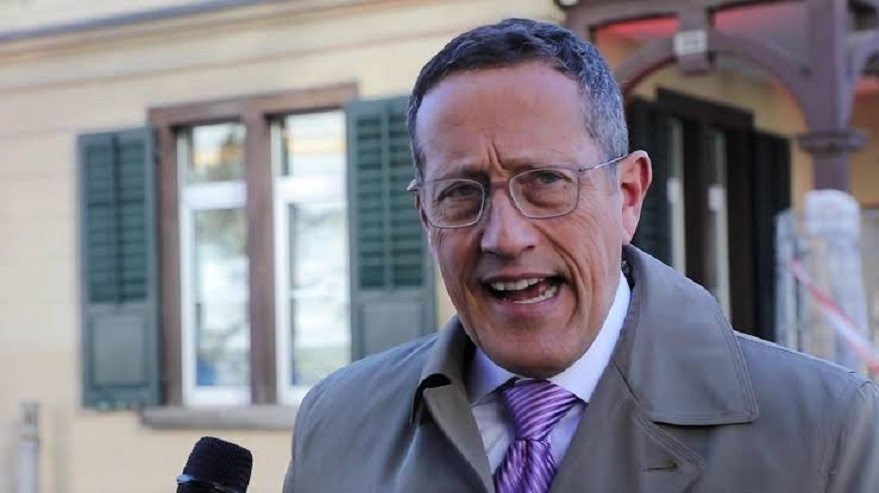
 Feature/OPED6 years ago
Feature/OPED6 years agoDavos was Different this year
-
Travel/Tourism9 years ago
Lagos Seals Western Lodge Hotel In Ikorodu
-

 Showbiz3 years ago
Showbiz3 years agoEstranged Lover Releases Videos of Empress Njamah Bathing
-
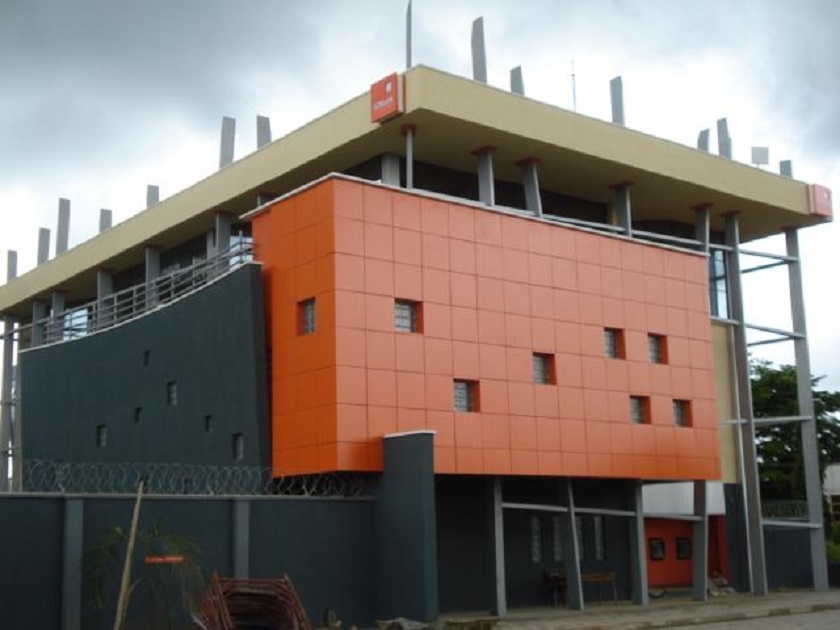
 Banking7 years ago
Banking7 years agoSort Codes of GTBank Branches in Nigeria
-
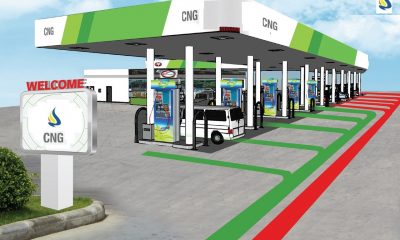
 Economy3 years ago
Economy3 years agoSubsidy Removal: CNG at N130 Per Litre Cheaper Than Petrol—IPMAN
-

 Banking3 years ago
Banking3 years agoFirst Bank Announces Planned Downtime
-
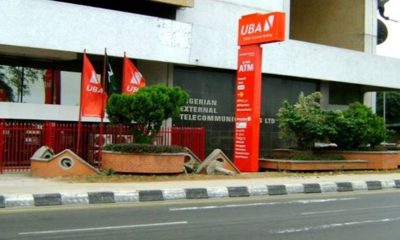
 Banking3 years ago
Banking3 years agoSort Codes of UBA Branches in Nigeria
-

 Sports3 years ago
Sports3 years agoHighest Paid Nigerian Footballer – How Much Do Nigerian Footballers Earn




